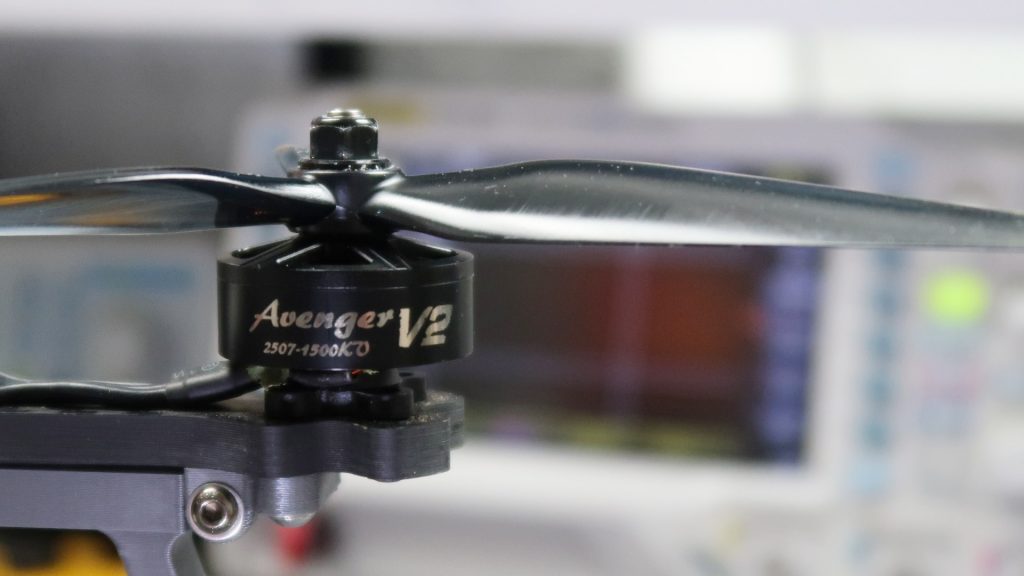How to choose motors for drones - especially 7-inch FPV quadcopters
One of the mistakes pilots makes when they build their first drone is they use too small motors. People think that if a motor works fine with 5-inch props, it will work with 7-inch props as well. After all, both have plenty of power and power is the key to everything.
It's not true. Power is only half on the story. Power is an effect of motor torque and rotation speed. The bigger torque and the bigger rotation speed, the power is bigger as well.
It's easy to guess that bigger propeller will be rotation slower than the bigger one. If the rotation speed is smaller and the motor has the same torque, the power might not grow after all. Also, the bigger propeller will have higher moment of inertia and will require more torque to change rotation speed, and generated thrust, as quickly as smaller ones.
This is why, when choosing a motor for a drone, you have to concentrate both on KV of a motor and a size. To be honest, the correct size is even more important than the correct KV.
How to choose the motor size
Drone motor manufacturers do not like to share torque data. I have no idea why. It would be so cool to be able to compare torque between motors of a different brand. Assuming, of course, they would be realistic. If we can not compare the torque of two motors, we can compare the next best thing: stator volume.
For our needs, we can just assume that bigger stator volume equals higher stall torque of a motor. Not very precise, but good enough. Luckily we can compute stator volume from the motor size. Two first digits are a stator diameter, two last digits are stator height. We can also skip Pi, since it's a constant. And then:
V = (diameter / 2)^2 * h
Stator volume of different motor sizes
| Motor size | Stator diameter [mm] | Stator height [mm] | Stator volume [mm^3] |
|---|---|---|---|
| 2204 | 22 | 4 | 484 |
| 2205 | 22 | 5 | 605 |
| 2207 | 22 | 8 | 847 |
| 2208 | 22 | 8 | 968 |
| 2306 | 23 | 6 | 793 |
| 2406 | 24 | 6 | 864 |
| 2506 | 25 | 6 | 937 |
| 2507 | 25 | 7 | 1093 |
| 2508 | 25 | 8 | 1250 |
Desired stator volume for propeller sizes:
| Propeller diameter | Min required stator volume [mm^3] |
|---|---|
| 5-inch | 600 |
| 6-inch | 700 |
| 7-inch | 900 |
To check is a motor will be good for a propeller size just check if stator volume is bigger than min. volume for a prop size. That's all. You can choose bigger volume but never lower. The lower volume will result in not enough torque and characteristical bobbing o pitch axis that is just impossible to tune out.
How to choose KV
In the case of motor KV, it's a similar case. Too high KV will result in an absolute lack of efficiency and overpowered drone (which is not desirable in most of the cases). Too low KV will result in an underpowered drone that will not be able to perform any fast maneuvers and feel very sluggish on the yaw axis.
The sweet spot/reference KV can be easily computed from this equation based on propeller diameter and supply voltage. Of course, more S will result in lower KV.
KV = Pc / S
KV- motor KVPc- propeller coefficientS- number of LiPo cells
Pc for different prop sizes:
| Propeller diameter | Pc |
|---|---|
| 5-inch | 9600 |
| 6-inch | 6400 |
| 7-inch | 7600 |
Recommended motors:
- For 5-inch iFlight XING-E 2208
- For 6-inch FlyWoo NIN 2207
- For 7-inch Brotherhobby Avenger v2 2507

I'm Paweł Spychalski and I do things. Mainly software development, FPV drones and amateur cinematography. Here are my YouTube channels:


